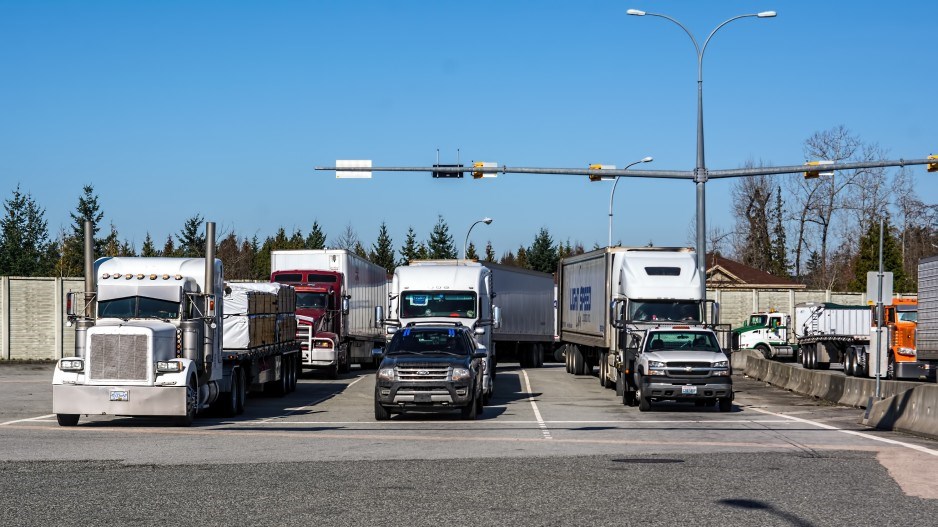Could the current COVID-19 pandemic spell the end to globalization?
Not likely, experts say.
But, most analysts agree that – when the world does return to a new normal after COVID-19 subsides – globalization will look substantially different from the current model, because the pandemic exposed several weak links in global supply chains that will need to be mitigated or resolved outright.
“I think there will be a rethinking on another level,” said Werner Antweiler, associate professor at the University of British Columbia’s (UBC) Sauder School of Business. “Globalization has been hugely beneficial to all of us, simply because of specialization and the comparative advantages of individual locations across the world. That force remains strong and true in the future. However, there is a broader question about the resilience of supply chains; how can we make sure that supply disruptions don’t make us vulnerable to the entire chain falling apart?”
Antweiler, who is also the director of the school’s Prediction Markets program, said the key word is “resilience”: companies emerging from the outbreak will have to consider their ability to weather massive global disruptions, whether through inventory management or establishing multiple manufacturing locations for every component in the production chain.
“That is a dimension that we haven’t dealt with in the past,” he said. “We’ve had local disruptions – maybe a localized epidemic or political disruptions – but we haven’t seen something that disrupts on a global scale like what we see today, where there are multiple supply locations shut down because people can’t come to work.
“For example, if you don’t get the chips from one location or the screens from another location, then you don’t have a cellphone. Every component is, in essence, critical. So you have to make sure that … we no longer depend on just one production location. For an individual company, it means having multiple locations and having redundancy built into the system.”
Yves Tiberghien, director emeritus of UBC’s Institute of Asian Research, noted that there has been a slow shift toward regional supply chains – a trend that may pick up after the COVID-19 pandemic subsides.
He added that the new economic globalization will also depend on the political wills of the major global players individually – specifically, that of the world’s largest economy.
“We have seen these connections being made between countries like Canada and those in Europe and Asia. What we don’t know is what the United States will do…. Mistrust between countries right now makes it hard for co-ordinated action. It’s hard right now to bring people together at the table.”
Observers such as South China Morning Post columnist Cary Huang have argued that the COVID-19 outbreak may be “fatal” to globalization because it exposes “the downside of over-reliance on Chinese supplies,” as the virus originated in the central Chinese city of Wuhan.
About 32% of global manufacturing is currently done in China, the world’s second-largest economy. Huang said businesses have benefited from the economic efficiency of cost-competitiveness optimization but are now also seeing its risks.
Andreas Schotter, associate professor of international business at the University of Western Ontario’s Ivey Business School, said such a dramatic result is unlikely because of the powerful nature of economic logic and the technological possibilities enabled by globalization.
“Globalization has enabled and pushed us to shift resources towards true knowledge and R&D collaboration, accelerating innovation,” said Schotter, who was in Hong Kong more than a decade ago as an expatriate business executive during the SARS outbreak. “The best example is the current global R&D alliance in the hunt for a COVID-19 vaccine. This effort is truly globalized. Imagine if everybody keeps everything to themselves, then there’s no way we would be able to have the kind of breakthroughs that we are already experiencing and will experience in the very near future.”
But he noted that isn’t to say globalization won’t change. Schotter has been advocating for multinational executives to identify supply chain choke points and develop contingencies for potential disruptions since the 2013 Sendai tsunami and Fukushima nuclear disaster.
He said executives need to have a vigilant leadership mindset to survive in the next phase of evolution for the globalization model.
“I see this crisis as a potential inflection point for a new type of human work paradigm – the future of where, what, how much and for what I work – a real shift in wealth distribution, potentially globally. Every crisis is an opportunity to recalibrate the system, and this one is no different.”
He added that only about 30% of trade currently crosses national borders, and multinational corporations operating within their own operational structures account for 70% of that total.
“There is simply no way and no economic reason for sourcing entirely domestic,” Schotter said.
Antweiler agreed.
“Lower cost is still a key factor. If I say I have a supply chain that’s more local and more resilient, and you have one that’s more global and less resilient, the global one will still be less costly in the end because it has productions in places with the lowest cost. The high-resiliency local supply chain would only have an advantage during times of major global disruption, so, ultimately, the logic of international trade … is still going to be very powerful and will not go away.”
Tiberghien added that consumers are a powerful force for keeping current globalization trends.
“People have gotten used to modern travel and technology. Young people grew up in this world, and they are not willing to give it up. There’s resilience and mutual interest from many countries to continue, but it will be a hybrid system. There will be some partial downscaling … maybe some regionalization here or there, but a lot will be determined by how we come out of the coronavirus outbreak – and if the governments can work together, we can perhaps come out of this in three months reasonably well.”




